Above: Two bands who played in London as Spandau Ballet…
SBv1 originated the name and here play their final gig at the
Hope & Anchor in 1979 with singer Mark Robinson, drummer
Gordon Bowman, bass guitarist David Wardill, (guitarist Mick Austin
off-camera) . . . SBv2, here in their previous incarnation as Gentry,
playing Camden School for Girls in December 1978, with Tony Hadley
on vocals and the chart-topping single True five years in the future
❚ DID YOU KNOW LONDON HAD TWO POP GROUPS called Spandau Ballet in 1979? The one who became famous adopted their name from the one who didn’t. That’s the claim in a jaw-dropping new history of the New Romantics scene, unauthorised and meticulously researched by David Barrat, a long-time music fan. His book is published this week titled New Romantics Who Never Were: The Untold Story of Spandau Ballet.
Barrat has gathered a mind-boggling compilation of spooky coincidences and things we never knew before in his 117,000-word paperback, self-published today on his own imprint Orsam Books. Here is no mere fan, but an obsessive one who has made himself the Mastermind champion in the two themes identified in his tongue-twisting title: Who exactly were the New Romantics of the early 1980s, who many of us believe powered one of the most transformational youth cultures of Britain’s postwar years? Barrat discusses how “New Romantics” as a two-word description came to characterise the style-leaders of British clubland when those leaders unanimously rejected it themselves.
His second theme is the true story of Spandau Ballet, the five-piece from Islington who set out with a cunning plan to weave a tapestry of fictions around their launch as electro-synth popsters in 1979. At the outset the band were coolly vague about their origins, as if they’d sprung from nowhere – or rather, from the dancefloor of the trendiest London nightspot in years, Covent Garden’s Blitz Club. You’d also have to be a fan with Barrat’s persistence to piece together spasmodic revelations about the band’s genesis as these slipped out during the succeeding decades. Spandau subsequently became global superstars in that momentous decade when image-conscious new British bands invaded the American pop charts. Then they quarrelled, as pop groups do, and arrived in the High Court in 1996 rowing over royalty payments. Individual members remained belligerent for years.
➢ Buy David Barrat’s New Romantics book
here: “gripping, original and epic”
Whether or not you care for Spandau and the 80s music scene, Barrat’s forensic approach to reassessing this creative landscape is utterly hypnotic and unlike anything you’ve read by the hacks of the creaking rock press. He has spent years in deep Holmesian research delving into official records, newspaper cuttings, TV interviews and conducting first-hand interviews. The result is gripping, original and epic. For instance: he reveals all about another band sharing exactly the same distinctive name a matter of months before Tony Hadley stepped onto the stage at the Blitz Club! Here is a well-informed juggernaut delivering into our laps mighty fact upon tiny fact, laid out for inspection and challenge. Barrat’s intent is resolute: to convince us he knows his stuff, and he has purged the popular version of events of their mutability.
David Barrat contacted me a few years back in order to check dates and events against my own detailed diaries and his aggregation of facts and assumptions is mostly hard to fault. His book now pays extraordinary and generous tribute to this website, Shapers of the 80s, and to myself as a former features editor of the Evening Standard who set out to celebrate the potency of the youthquake erupting in 1980.
SO WHO WERE THE OTHER BAND?
❑ The musicians originally called Spandau Ballet (hereafter called SBv1) were four lads who met in 1978 during their teens in Bedfordshire: guitarist Mick Austin, singer Mark Robinson, drummer Michael Harvey and punky bass guitarist David Wardill. They agonised for ages over a band name and Austin remembers a “eureka” moment while they were using the Dadaist method of juggling words on random scraps of paper. They arrived at the darkly Germanic first word (originally with an incorrect umlaut over the U, as in Spandaü) and then paired it with “the softer, romantic” word Ballet. The package was deemed “nicely decadent”, a debut gig was planned for 30 August 1978 and accordingly Robinson designed a poster for it, which we see below. Wardill declared his ambition: “We were going to go to London and become rock stars.”
So how on earth did their oddball band name transfer itself to a struggling five-piece from Islington? The reader’s mind boggles at the number of spooky coincidences that Barrat’s book uncovers. Wardill had fallen in love with journalism graduate Deanne Pearson who rented a flat at 32 Sibley Grove in East Ham, so in October 1978 he moved in and subsequently members of SBv1 often came to crash on the floor. Coincidentally . . . this flat was shared with the yet-to-become seminal Blitz Kids, Kim Bowen and Lee Sheldrick while freshers at St Martin’s School of Art, who soon joined up with a stylish posse mainly lodged in Battersea’s Ralph West halls of residence which served the population of all London’s art schools. These included graphics student Graham Smith and the social dynamo Chris Sullivan who would soon find himself running the seminal Wag club for nearly 20 years.
Click any pic below to view complete images
In her forthcoming autobiography Kim relates how, in mid-1979, she fled far-flung East Ham and, accompanied by “a trio of self-described Nelly Queens”, penetrated an empty Georgian house in Fitzrovia to establish a squat in Warren Street, a leisurely walk away from St Martin’s. It was to become notorious. “Within weeks the creme de la creme of young London was living there,” Kim writes, and her bold manuscript spares no detail about their very un-private lives. This stylish property became the hub of social life for the Blitz Kids who were meeting every Tuesday at the Covent Garden Blitz Club since Steve Strange’s Neon Nights had begun that February. As milliner Stephen Jones’s mannequin de vie, the wild and startlingly elegant Kim elevated herself to Queen of the Blitz. Many of the Kids’ high-style antics were documented by Graham Smith while he – coincidentally – became the official photographer of the second Spandau Ballet (SBv2) who announced their name for their first public concert on 5 December that year, with invitations designed by Smith. (His lavish photo-book We Can Be Heroes, with authoritative text by Chris Sullivan, was published in 2011 and remains an unbeatable record of both style and excess).
In October 1978, the Beds boys SBv1 had started working as busboys as well as rehearsing at The Venue, Virgin’s new nightclub in Victoria, where they immortalised their band’s name by spraying it in green paint on the toilet walls and on other public walls elsewhere in central London. Amid all the ancient myths about where SBv2 found their name, this band’s early propagandist and future broadcaster Bob Elms has said he first spotted the phrase “Spandau Ballet” as graffiti variously on prison walls or toilet walls in the Spandau district of Berlin during a soulboy group trip in summer 1979.
Coincidentally – however, during an interview way back in 1984 one prominent Blitz Kid told me the graffiti had been very visible on the toilet wall of The Hope, a favourite pub in Tottenham Street in London, not far from the Warren Street squat. “Some boys from north-east London were using that name in a school-type band.” Also coincidentally – along the same block as The Hope stood the trendy new Scala cinema, whose programmer then was 22-year-old Stephen Woolley (today a major player in the British film industry), who was a contemporary of SBv2 manager Steve Dagger and their stage designer Simon Withers, all of whom coincidentally attended Dame Alice Owen’s school in Islington and grew up there with the other members of SBv2 – Gary and Martin Kemp, Tony Hadley, John Keeble and Steve Norman.
Barrat’s fabulous cascade of coincidences throws up at least SIX PRIME SUSPECTS in The Ballet Great Mystery: Who really did feed the name Spandau Ballet through to the Islington band SBv2, who during 1978–79 were known as Gentry, a power-pop combo? Barrat’s new book draws its own conclusion.
PS: EVEN MORE SPOOKILY
ON MY DOORSTEP. . .
❑ Scroll forward a few years from the birth of SBv2. . . After my day-jobs in journalism, I taught an adult evening class in Creative Writing for 16 years in west London, after which it was traditional for the more entertaining students to continue the evening at a nearby pub. Among several who became long-standing friends was – coincidentally – the same David Wardill of SBv1 (also visible in the video below). His musical background meant we had lots to discuss when we met in 1989, including his earlier life in East Ham with Kim Bowen and Lee Sheldrick.
David and I drifted apart but had a sudden email reunion while I was building this website in 2009. He told me that soon after completing the writing class he sent a story to the BBC which turned up two years later as a film from BBC Birmingham. These days he was a father and teaching art in a secondary school.
As for SBv2, he admitted: “I never really cared much that they had borrowed our band’s name, as I didn’t see much chance of us wanting it back.” SBv1 ground to a standstill in May 1979 and David soon joined another band called The Passions who enjoyed airplay by Radio 1’s influential deejay John Peel and eventually made it to Top of The Pops in 1981 with their song on Polydor, I’m in Love with a German Film Star, which reached No 25. (Coincidentally – SBv2 arrived at No 17 with Musclebound in the same edition of TOTP and we hear them being announced at the end of the clip below. Oo, er.)
David added: “The Passions reunited recently for a day at a studio in Shepherd’s Bush. That laid a lot of ghosts to rest. Our main song has been covered by the Foo Fighters and Pet Shop Boys. Strange how the past hangs around, although I find the continued interest gratifying, as well as financially useful.” Spoken like a star.
❑ And here today we still have not given away the truly spookiest coincidence among those that Barrat reveals about SBv1 & v2 when their paths almost crossed in May 1979 – it’s a goose-pimples moment that stops you in your tracks, so we’re not going to spoil it. However, other reflections on this vital addition to our bookshelves will follow here at Shapers of the 80s as we read on…
➢ Previously at Shapers of the 80s: Just don’t call us New Romantics
➢ Previously at Shapers of the 80s: Who’s Who in the Pits – Harry Cool’s Guide to the New Glitterati





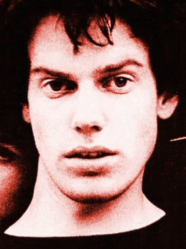

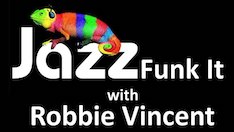



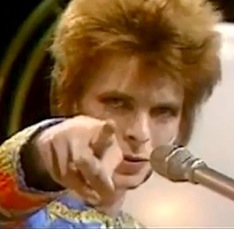
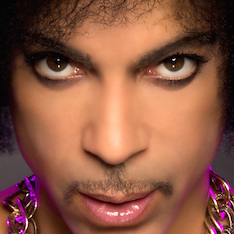
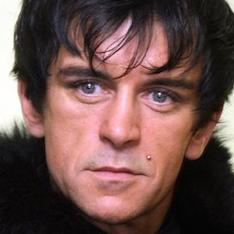

Yep. True.
But what could we do?
Thanks for setting the record straight.
LikeLike
Hello Mark, long time since the heady days in the Ampthill pubs, parties in East Ham and the Venue in Victoria. Yet sometimes seems so recent. Hope you’re well.
LikeLike
You have just solved a mystery for me. I have an old school book with a list of gigs from my first gig being The Clash January ’78 until I gave up writing it all down in the 90s. No one seemed to believe me when I said I saw Spandau Ballet play at my school youth club in Ampthill, Bedfordshire. I remember telling friends that a bloke called David Wardill was in the band and went on to play in The Passions.
Now I read this I can seriously confirm it. I remember David going to London to a squat as a couple of my friends ran away to live in a squat (they lasted a week). We were only 15. I intend to write my own story one day as I have all my diaries from ’75 to ’83. At least I know that I wasn’t imagining it all.
❏ Shapersofthe80s writes: What a brilliant story of coincidences, Sandra. You can imagine how spooky it was to meet David in my evening class and then to discover his role in the origins of Spandau’s name a decade earlier. I have my own opinion about which of the six potential candidates passed the magic words through to the Islington band called Gentry, but it’s much more fun to leave it for people to read David Barrat’s book.
LikeLike